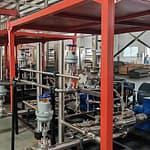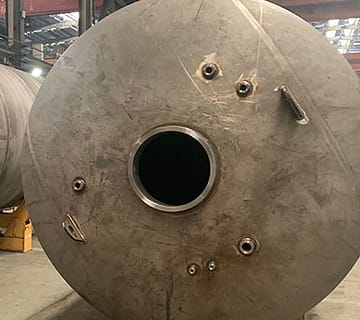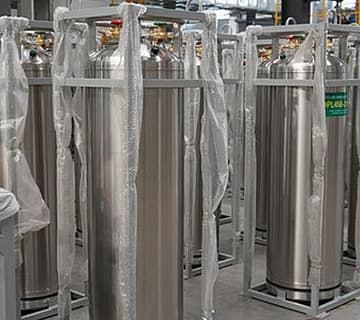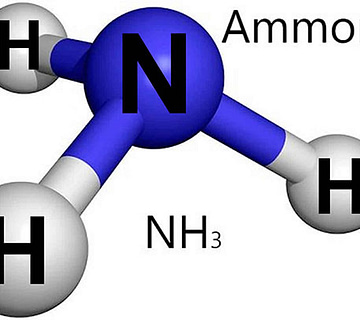The Application of Liquid Nitrogen in Food Preservation
Liquefied nitrogen has transformed food preservation by offering many benefits, including maintaining freshness and nutritional value and enhancing texture while extending shelf life. Widely adopted in the food industry for its reliability and safety, let’s delve into its application and why it’s a preferred method.
What is Liquid Nitrogen?
LN2 refers to the liquid form of nitrogen at an extremely low temperature: -196C (321F), making it much colder than traditional freezing methods.
Cryogenically treated water inside the food rapidly turns into ice, which is colourless, odourless, and non-flammable. It makes it perfect for rapid freezing/cooling applications like food preservation, especially for seafood.
Why liquid nitrogen can preserve seafood or food?
When food is exposed to such a low temperature, the water inside the food rapidly turns into ice. This rapid freezing prevents large ice crystals from forming inside the food’s cells.
The extremely low temperatures inhibit the growth of bacteria and mold. At these temperatures, Bacteria and microorganisms become dormant or are killed, significantly extending the shelf life of the food.
Fast freezing helps better retain vitamins and minerals and locks the nutritional content of the food.
Benefits of Liquid Nitrogen in Food Preservation
- Rapid Freezing: Liquid nitrogen’s ultralow temperature facilitates fast freezing times for food products, creating smaller ice crystals than conventional methods and thus maintaining cell structure and quality in each food item frozen quickly with liquid nitrogen. Therefore, the texture and quality of the food will remain intact only because it freezes instantly.
- Enhanced Freshness and Flavor: Liquid nitrogen can rapidly freeze food, preserving its fresh taste and aroma. It helps lock in the natural flavours and nutrients, making the food taste like it was just harvested or prepared.
- Extended Shelf Life: Liquid nitrogen freezing significantly slows down the enzymatic and microbial activities that cause food spoilage. This extends the shelf life of various perishable items without chemical preservatives.
- Nutrient Retention: The quick freezing process preserves the nutritional content of the food. Vitamins, minerals, and other essential nutrients remain primarily unaffected, ensuring the food retains its health benefits.
- Versatility: Liquid nitrogen can be used to freeze a wide variety of food items, including fruits, vegetables, meat, seafood, dairy products, and prepared meals. It is also used to produce frozen desserts like ice cream.
Applications in Food Preservation
- Frozen Vegetables and Fruits
Using liquid nitrogen, fruits and vegetables can be frozen at peak ripeness. This process maintains their colour, texture, and nutritional value. For instance, berries frozen with liquid nitrogen retain their shape and do not become mushy upon thawing.
- Meat and Seafood
Liquid nitrogen is used to freeze meat and seafood quickly, preventing the growth of bacteria and maintaining the natural moisture content. When cooked, this results in better-tasting and more visually appealing products.
- Ice Cream and Frozen Desserts
Liquid nitrogen is popularly used to make smooth and creamy ice cream. The rapid freezing process prevents the formation of large ice crystals, resulting in a finer texture and a more enjoyable eating experience.
- Prepared Meals
Prepared meals frozen with liquid nitrogen maintain their taste, texture, and nutritional value, making them convenient and healthy options for consumers. The technique is ideal for ready-to-eat meals that need to be stored for extended periods.
Safety Considerations
While liquid nitrogen offers numerous advantages, it must be handled with care due to its extremely low temperature. Proper safety protocols should be in place to prevent injuries such as frostbite. Additionally, equipment used with liquid nitrogen should be designed to handle cryogenic temperatures to avoid damage and ensure safety.
Conclusion
Liquid nitrogen has become an invaluable tool in the food industry because it preserves the quality, taste, and nutritional value of food products. Its rapid freezing capabilities offer a superior alternative to traditional freezing methods, making it a preferred choice for both manufacturers and consumers. As technology advances, we can expect even more innovative applications of liquid nitrogen in food preservation, further enhancing the quality and longevity of our food.










No comment